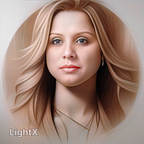CNNs: The Secret Sauce to AI’s Success (Part I)
After ANN (Artificial Neural Network) and its practical implementation in the past weeks, this week we will discuss what CNN is.
The limitations of Artificial Neural Networks (ANNs), its inability to handle spatial information effectively and computational inefficiency for image-related tasks resulting in overfitting, prompted the birth of Convolutional Neural Networks (CNNs).
CNN or Convolutional Neural Networks are a specific type of neural network for processing data. This is also called ConvNets because they use a mathematical operation called convolution to process grid-like data, particularly image classification, object detection (LiDAR — Light Detection and Ranging) and time-series forecasting. This convolution operation helps them automatically learn and extract features, making ConvNets a perfect algorithm for tasks like image recognition. CNNs makes use of local receptive fields, weight sharing, pooling layers, and an architecture designed for translation invariance. This specialization makes CNNs highly effective for tasks like image recognition and processing without requiring extensive manual feature engineering.
In the 1980s, the world saw its first CNN developed by postdoctoral computer science researcher Yann LeCun. It was built to recognize handwritten digits. The NN architecture was straightforward, with five layers of 5x5 convolutional layers and 2x2 max-pooling. It was named as LeNet after Yann LeCun himself. But the use of CNN’s remained limited due to various reasons, such as the need for a lot of training data and computational resources. Also, due to simple architecture, it could only work on low-resolution images.
CNNs are inspired by the human visual cortex and its ability to recognize patterns in visual data. CNNs use small local receptive fields, have a hierarchical structure for feature extraction, share learned features, and exhibit translation invariance, similar to the visual cortex.
While originally designed for computer vision tasks, CNNs have been applied to various domains due to their capacity to learn hierarchical features from data.
The research of David Hubel and Torsten Wiesel on the visual cortex of cats, conducted in the 1950s and 1960s, inspired the development of Convolutional Neural Networks (CNNs). Their findings about the hierarchical and feature-based processing in the visual cortex influenced the design of CNNs, particularly the use of local receptive fields and feature extraction for automatic pattern recognition in visual data. Notable CNN implementations include NeoCognitron by Fukushima in 1980, LeNet5 by Lecun, Bottou, and others in 1998, HMAX by Serre, Wolf, and colleagues in 2007, as well as AlexNet by Krizhevsky, Sutskever, and their team in 2012, GoogLeNet by Szegedy, Liu, and collaborators in 2015, and ResNet by He, Zhang, and others in 2015, among others.
Architecturally, CNN consists of several layers including input and output layers, convolutional layers for feature extraction, activation functions like ReLU, optional pooling layers for dimension reduction and tuning hyper parameters, fully connected layers for learning complex patterns, and optional dropout and batch normalization layers to improve training stability.
CNNs excel at automatically learning hierarchical features from data, making them well-suited for tasks like image analysis and recognition. And so, Hyperparameters tuning is crucial for configuring how the CNN processes and extracts features from input data. It can be a time-consuming process, but it is essential for maximizing the model’s performance on a specific task. This involves defining the hyperparameters, selecting a search space, choosing an optimization technique (e.g., grid search, random search, generic algorithm, Bayesian Optimization), training and evaluating the model for each hyperparameter combination, iterating and refining the process, using techniques like cross-validation, and monitoring results. Automated tools and libraries can aid in this iterative process, which is crucial for maximizing the CNN’s performance while avoiding overfitting.
Convolutional Neural Networks (CNNs) are essential tools in computer vision, particularly for image analysis. However, they come with several drawbacks. First, they demand substantial labeled data for effective training, which can be a limitation in tasks with limited data availability. Additionally, CNNs are computationally intensive, often requiring powerful hardware for training and inference. Overfitting, where the model performs well on training data but poorly on new data, is a common challenge, especially with smaller datasets. Interpretability is another concern, as CNNs are often considered black-box models. They excel at capturing local features but may struggle with understanding global context and relationships in an image. Data augmentation techniques are frequently needed to enhance performance, adding complexity to model development. Furthermore, CNNs are not well-suited for all types of data and may not generalize to irregular data without preprocessing. Their applicability is mainly confined to image-related tasks, and deploying them in resource-constrained environments can be challenging due to their size and memory requirements. Training deep CNNs can be time-consuming, and ethical concerns arise from their potential to amplify biases present in the training data.
Despite these limitations, CNNs continue to advance computer vision, with ongoing research addressing these challenges.
Stay tuned for more on this topic next week.
My other blogs:
Unleashing The Power Of GPT-4: A Quantum Leap In AI Language Models
The Future of Neural Networks May Lie in the Co-existence of Neurons and Perceptrons
Activation Functions: The Hidden Heroes of Neural Networks
Optimizers: The Secret Sauce of Deep Learning
Loss Function| The Secret Ingredient to Building High-Performance AI Models
Mastering MNIST with ANN: Secret to hand-written digit recognization
If you enjoy reading stories like these and want to support my writing, please consider Follow and Like . I’ll cover most deep learning topics in this series.
